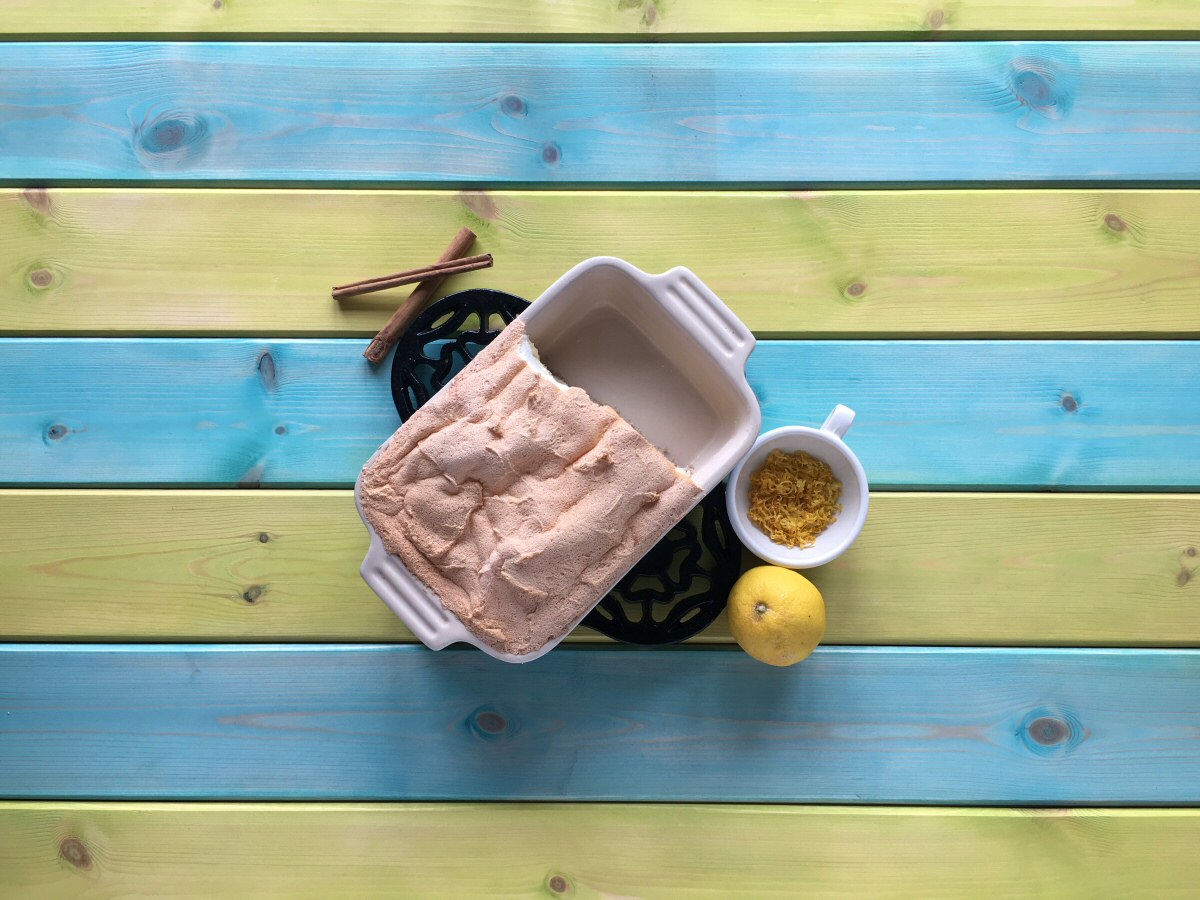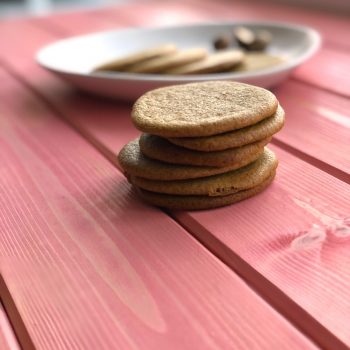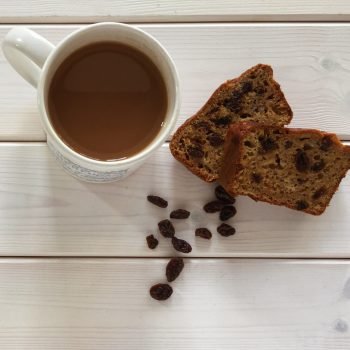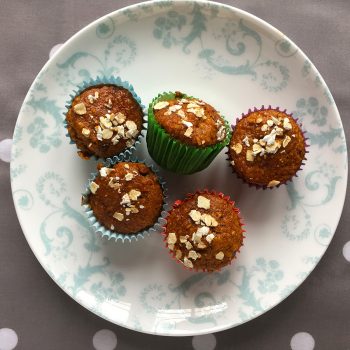There’s nothing quite like the sweet, tangy taste of a freshly-made lemon meringue pie. Unless, of course, that lemon meringue pie is 100% sugar free . And I hope you’re holding onto your socks right now, because I am about to blow them clean off your pretty little ankles: this is THREE RECIPES IN ONE
Lemon curd? BOOM. POW. Buttery biscuit base? SHAZBOT.
…or, while you’re here, you could spend 45 minutes making a delicious and utterly sin-free lemon meringue. Ready? LET’S GET TANGY WITH IT.
Method
For the buttery biscuit base
Add 40 g oat flour , 40 g wholemeal flour , 0.5 tsp ground cinnamon , 0.5 tsp baking powder , 0.125 tsp stevia and 1 pinch salt to a bowl and mix well with a metal spoon. If you don’t have oat flour, just whizz up the same weight of rolled oats in a blender or chopper – I personally use the Ninja Master Prep because it’s small and neat. You can also use a blender to combine these ingredients – just blitz them together for 10-15 seconds.
Take HALF of 80 g softened butter (so if you haven’t adjusted the quantities, you want 40g of the butter right now) and melt it for 10-15 seconds in the microwave. If it’s not completely melted, stir it together until all the lumps are dissolved; you don’t want to overheat or burn the butter. Now pour the melted butter into your flour mixture and combine with a knife (Free tip! I prefer to mix/combine ingredients with a knife as you get a better mix quicker, without half of the mixture sticking to your spoon) until it’s combined.
What you should have now is a bowl of loosely-clumped biscuit dough. Get your hands in there and try to form the dough into a ball; if it still feels loose and dry, add 2 teaspoons of milk at a time and combine well, then try to form a ball with the dough again until it holds its shape and feels just slightly sticky.
Preheat your oven to 160°c fan (180°c no fan, 350°f). Lightly dust your rolling pin with flour and roll out your dough evenly on a sheet of baking/parchment paper until it is just less than quarter of an inch thick (or a little more than the thickness of a pound coin). At this point, you can either stick your rolled out dough in the fridge for a couple of hours, or if you want to cheat, stick it in the freezer for 5-10 minutes. If you use the freezer method, you may want to leave it out for 5 minutes after removing from the freezer so that it is just cold rather than frozen solid (depending on just how kick-ass your freezer is).
Place your cold cookie dough on a room-temperature baking tray (you should leave it on the baking paper you rolled it out on, though) and put in the oven for 12-14 minutes. Check after 10 – it won’t brown very much or spread out, but it will feel slightly soft to the touch. Once the edges start to crisp up a little, take it out of the oven and put to one side.
For the filling
Squeeze out 125 ml lemon juice – 125ml is approximately 1 – 1.5 lemons. You want to keep the pulp, and also set aside approximately a 1/2 teaspoon of lemon juice for your meringue later. Also, when you separate your 2 egg yolks(s) , keep your egg whites in a bowl, as you will use these for your meringue too.
Add 125 ml lemon juice , lemon pulp, 8 tsps xylitol , 2 large eggs(s) and 2 egg yolks(s) into a pan (a small milk pan like this is ideal ) and whisk together. Then put the pan on a low (low! ) heat and add 85 g soft butter in cubes, stirring as you do.
Once the butter has melted completely, which should take 3-5 minutes, turn the heat up to medium and keep stirring continuously. You should find your lemon curd thickens up pretty quickly – usually only in a couple of minutes. Dip a teaspoon and, after giving it a minute to cool, taste it – if it tastes too sharp, you can add 1 pinch stevia to round out the taste a little. Once it is nice and thick, taken the pan off the heat and set to one side. You may want to stir it every few minutes just to ensure there are no huge lumps. The consistency should be thicker than a pouring custard – more like the custard you would have in a trifle. If it coats the back of a spoon without dripping off, then it’s perfect.
For the meringue
Add 2 egg whites(s) , 6 tsps powdered xylitol , 0.5 tsp lemon juice and 0.125 tsp stevia to a bowl and stir together briefly. If you don’t have powdered xylitol, simply grind up the same amount of regular granulated xylitol with a pestle & mortar until fine.
Using a handheld electric mixer, whisk together the egg-white mixture on a low speed for a couple of minutes. When it starts to whiten and thicken up and has approximately doubled in volume, set your mixer to medium-high and whisk for another 4-5 minutes, turning the bowl as you do. Your meringue mixture should be stiff enough that when you remove the mixer, the meringue won’t fold in on itself but instead stay stiff and can easily form stiff peaks that don’t droop.
Putting it all together
Pre-heat your oven to 170°c fan (190°c no fan, 375°f)
Take your giant digestive biscuit that you baked earlier and crumble it up with your hands (or a rolling pin) in a bowl until your left with small biscuit crumbs. Melt the remaining half of the 80 g softened butter and pour into the bowl, combing with a knife until the whole mixture is nice and buttery. Tip into a small baking dish (I use a Le Creuset 0.6-litre stoneware baking dish, which is the perfect size for this quantity) and pack down tightly and evenly with the back of a spoon.
Once your lemon curd has cooled enough, pour over the biscuit base so that it is evenly covered.
Using a silicon spatula, scrape small fist-sizedclumps of your meringue onto the lemon curd. Although it may be tempting, do not try to pat it down – just lay it on top. The lemon curd beneath is still essentially just a liquid and will move and overflow if you apply too much pressure. Try to fill the top of the dish as evenly as you can with meringue, and use a teaspoon to fill in any gaps at the sides & corners. If your worried that it looks a bit too much like a certain Republican candidate’s hair, you can smooth it down gently (very gently) with the spatula.
Bake in the oven for 15-20 minutes, checking after 15. If the top of the meringue looks evenly brown, your meringue is done. Take it out and leave to cool completely before serving or putting in the fridge.
Hide Method
…and you’re done! Look at that – not only did you just make a delicious, sugar-free lemon meringue pie, but you also made your own biscuits (and then destroyed them), your own lemon curd (from scratch!) and your own sugar-free meringue! Now get out there and kick everyone’s ass.
Nutritional Info
Total Carbohydrates
14.4g
*Typical values per serving.
Hide Nutritional Info












